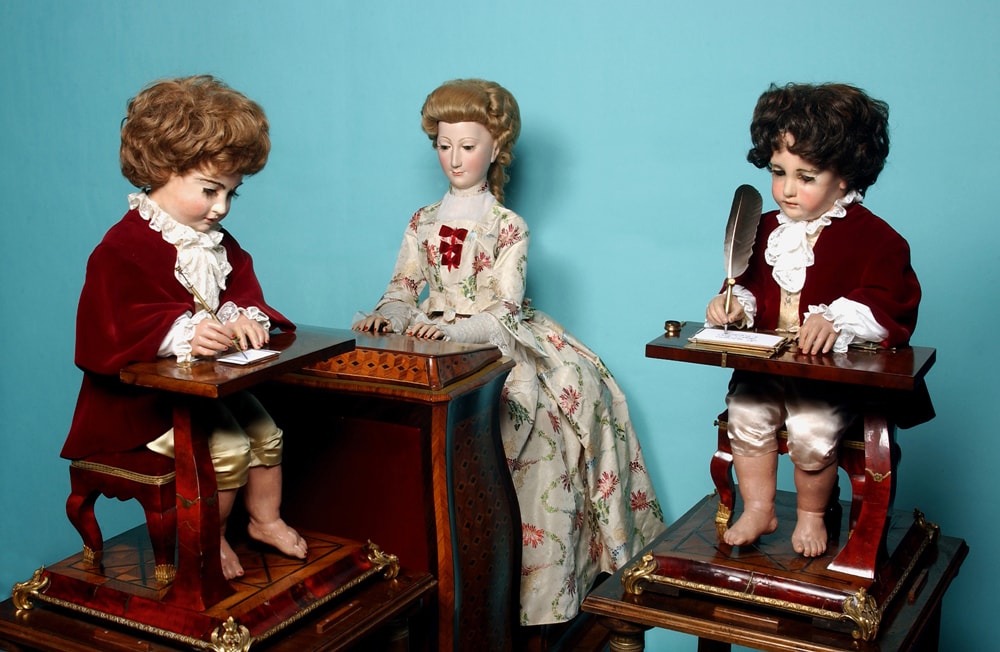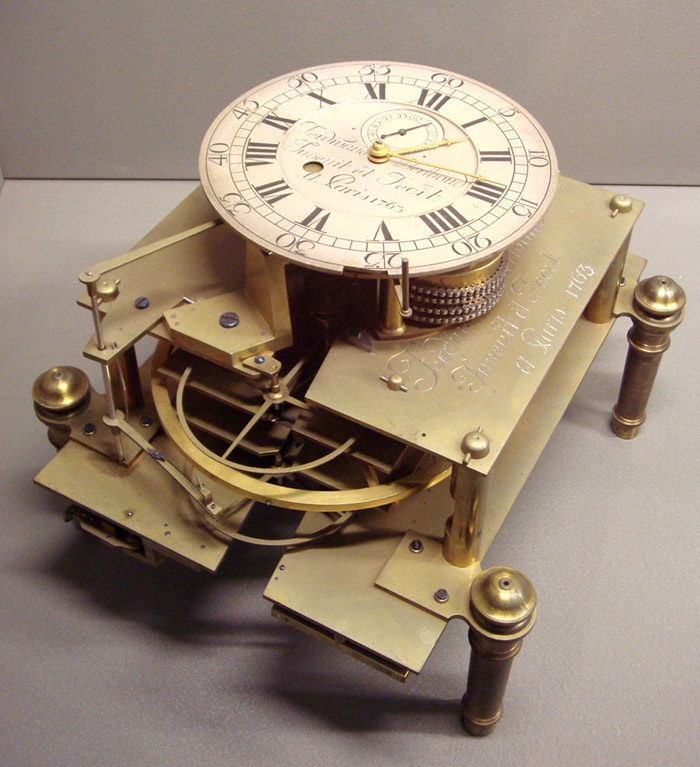Watchmaking prowess has stood the test of time thanks to some iconic figures who have defied it. If the history of watchmaking is the fruit of a thousand-year-old conquest, it has undeniably been composed by a handful of talented minds.
Christiaan Huygens, a pioneering precision watchmaker
Christiaan Huygens was born on April 14, 1629, into a family of dignitaries in The Hague (Netherlands). He benefited from his father’s entourage of poets and diplomats, but it was to the mysteries of science that he threw his true devotion.
He began studying law and mathematics before finally turning to the physical sciences and astronomy. Galvanised by the free-thinking environment that reigned in the Netherlands at the time, he made a prodigious number of scientific works and discoveries.
Among Huygens’ most remarkable innovations, we find without a doubt those related to the field of clocks and watches. In 1656, the Dutch scientist developed the pendulum clock. He used Galileo’s formula for the isochronism – the duration of oscillations independent of amplitude – of the pendulum, which he perfected to adapt it to clocks and gain in precision.
In 1659, he further improved the isochronism of the pendulum by creating the cycloidal pendulum. He installed two cycloidal cheeks near the suspension point of the pendulum which forced the semi-rigid rod to describe a cycloid. The period of oscillation is then constant whatever the amplitude.

In 1675, he invented the spiral spring, still used today in the vast majority of mechanical watches, which allows any mechanical watch to function since it “stores” energy when the crown is wound. To discover how a mechanical watch works and the importance of the balance spring, see our blog article Following this, he exhibited a first model of a balance-spring watch to the Royal Society, made by the French watchmaker Isaac Thuret.
Both theoretician and experimenter, Christiaan Huygens was one of the precursors of the modern scientific spirit.

Pierre Jaquet-Droz, a mechanical watchmaker of genius
Pierre Jaquet-Droz was born on July 28, 1721, in La Chaux-De-Fonds (Switzerland) into a wealthy family of peasant watchmakers. He turned to the watchmaking sector after having undertaken the first training in mathematics, physics and theology.
From 1738 to 1747, he produced a large number of long line clocks that differed from existing models in their sophistication. An expert in the principles of mechanics, he was fascinated by the complexity of the automata that he used to embellish his clock movements, which quickly attracted a wealthy clientele.
Under the advice of Milord Maréchal, governor of the Principality of Neuchâtel, he leaves in 1758 for Spain with his father-in-law and a young worker in a cart carrying six clocks. He presented his works to King Ferdinand VI of Spain, who was dazzled by the famous clock that chimed on demand without the need to touch it.
Returning to La Chaux-de-Fonds in 1759 with a large sum of money from the King of Spain, the Swiss watchmaker devoted himself to the manufacture of his watches, clocks and famous automata. In addition to his increasing production and marketing, he created three extremely complex androids: the musician, the draughtsman and the writer.
These creations chimed the climax of his work, establishing the reputation of Pierre Jaquet-Droz and guaranteeing the company’s success both in Switzerland and abroad for the next few years.
Ferdinand Berthoud, a watchmaker and naval engineer prodigy
Ferdinand Berthoud was born on March 18, 1727, in Plancemont-sur-Couvet (Switzerland) into a family of notables. He received a solid scientific education and moved to Paris when he came of age to perfect his skills as a watchmaker.
His skills in science, engineering and mechanics propelled him to the rank of Master Watchmaker at the age of 26, by special favour of the King of France. A year earlier, the young watchmaker had impressed the jury of the Royal Academy of Sciences with his brilliant project of making an equation clock.
Following this distinction, Ferdinand Berthoud opened his workshop in Paris. His reputation and success grew, galvanised by the publication of his detailed research promoting the knowledge of watchmaking. A prolific researcher, he also wrote for the Encyclopedia published between 1751 and 1772 under the direction of Diderot and d’Alembert, two French writers of the time.
At the heart of an era marked by European courts eager to master the calculation of longitudes, Ferdinand Berthoud was sent to London by King Louis XV to examine the marine clocks of John Harrison.
Elected a member of the Royal Society and appointed “mechanical watchmaker to the king and the navy”, he continued his research and innovations in the improvement of clock mechanisms.
In addition to his innovations, Berthoud devoted a large part of his career to a colossal work of writing and publishing, inviting his successors to be inspired by his knowledge and to create in their turn.

3 famous watchmakers with resounding research
These three famous watchmakers, like others, have contributed to the development of watchmaking. Men of science above all were seduced by the challenges of watchmaking and the progress that remained to be discovered in the measurement of time.
Their research led to major inventions that revolutionised watchmaking in terms of precision, refinement and marketing.
Driven by the values of perfection, precision and innovation, these three discoverers and inventors have devoted their entire lives to a common goal: the measurement of time.
To be a watchmaker is to be an artist of the time. It means mastering what gives rhythm to our daily lives. It is to understand the mechanisms of what we are chasing. Initium , which presents itself as an ambassador of watchmaking, offers the possibility of penetrating the mysteries of mechanical watches and designing your timepiece with an aura of timelessness.
Sources
Chronotempus (s.d.). « Ferdinand Berthoud ». Consulté le 14.09.2021.
Haute Horlogerie (s.d.). « Galileo galilei » (dit galilée) Consulté le 21.09.2021.
Herivel, John (2021). « Christiaan Huygens ». Encyclopedia Britannica. Consulté le 14.09.2021.
Le Point (2012). « Pierre Jaquet-Droz ». Consulté le 14.09.2021.
http://archive2012.automatesetmerveilles.ch